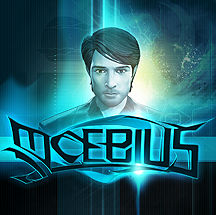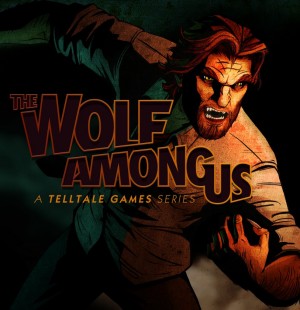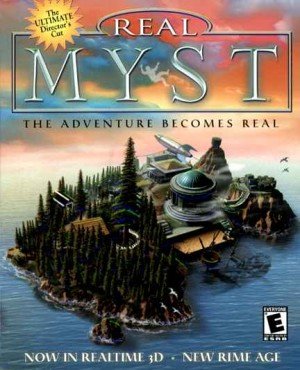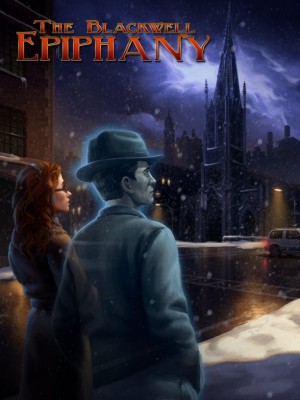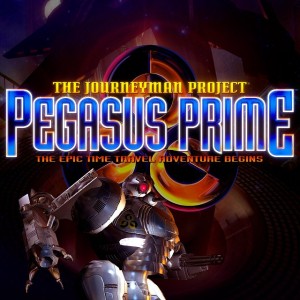Review for The Fall: Part 1
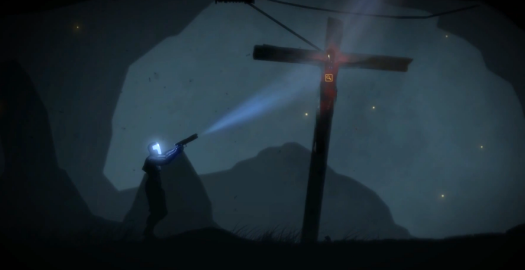
Looking at screenshots of Over The Moon’s recent side-scrolling horror adventure The Fall, you’d be forgiven for mistaking it for a stereotypical sci-fi actioner, the kind that tasks players to guide Generic Astronaut X through Inhospitable Environment Y to reach Goal Z. While it certainly retains a few traces of classic Metroidvania gameplay, however, there is very little actual action, with emphasis instead placed on inventory-based puzzle solving and telling a dark, atmospheric story. In fact, the compelling story is the true selling point of The Fall.
It does indeed seem at first glance that the designers resorted to that go-to safety net of science fiction, where an unlucky cosmonaut has somehow gotten stranded on an alien planet and must use his wits to survive. But appearances can be deceiving. In reality, The Fall’s protagonist isn’t Josephs, the human wearing the spacesuit, but the actual suit itself. During an unprotected freefall from orbit, Josephs becomes critically wounded inside his suit and loses consciousness. This prompts A.R.I.D., the artificial intelligence onboard the suit, to take over all essential functions and follow its prime directive: to save its pilot by finding medical assistance for him somewhere on the planet.
While there is no cosmetic difference between an AI-controlled suit and a human wearing said suit, it has some interesting implications for the game’s story. A.R.I.D. acts on pure logic and follows its programming to a fault. It is wholly incapable of lying, disobeying, or performing any action that causes its pilot direct harm. As A.R.I.D. explores the planet, it discovers the ruined shell of a droid repurposing facility, once a thriving place of industry, now devoid of life and populated only by other AIs and machines. Time has taken its toll, and some of the mechanical beings have spent the years developing quasi-human personalities, ending up with a strangely skewed grasp on reality in the process.
The game’s writing really shines in the interactions between A.R.I.D. and the other AIs, exploring the tragic process that occurs when a being of cold, programmed logic completely goes off the deep end. Dialog choices are stated in ways that would make sense to artificial intelligences (instead of “asking questions”, you are “acquiring data”). Without any trace of emotion whatsoever, A.R.I.D. can have a rational conversation with another robot about turning it off and removing its power source, i.e. killing it and looting its corpse. This method in approaching how the characters relate to each other is at once uniquely interesting and scary in its cruel efficiency.
Josephs’ loss of consciousness has caused most of his suit’s functions to toggle offline. Re-enabling these functions works in a similar fashion within the game as obtaining new abilities does in other titles; some alter A.R.I.D.’s programming and enable you to solve the game’s puzzles, while others unlock new gameplay mechanics, like combat or camouflage, to help A.R.I.D. survive on its way through the abandoned facility. However, the developers have implemented a rather clever mechanic to acquire these new abilities throughout the adventure. In the absence of a conscious pilot, the suit’s safety protocols prevent any systems from coming online unless faced with a potentially lethal situation that must be averted. For example, the only way to reactivate the camouflage ability is to come under deadly fire from an enemy. This lets A.R.I.D. take advantage of a loophole in its programming: By submitting Josephs to dangerous situations, despite her programming to protect him at all costs, suit functionality is restored bit by bit.
Though there is some gunplay sprinkled into The Fall at a few points, it really is a negligible amount that doesn’t detract from the overall adventure experience. Essentially nothing more than pointing and clicking, the three or four combat sections are brief and amount to about the same as a sort of “rhythm puzzle” – time your clicks just right to stay in cover, pop out at the right moment, squeeze off two or three shots, repeat. There is very little difficulty imposed by this, as there is no reloading necessary, and A.R.I.D. has both regenerating health and shields. There is a boss battle at one point, but even this is focused on the combination of brains and brawn.
Graphically, The Fall thrives on darkness, and rarely goes out of its way to show off very much of its environments. In fact, the entire foreground is displayed in pure black silhouette, including the suit itself (which fans of Dead Space will probably find suspiciously familiar). Backgrounds are also quite dim and sometimes purposely hazy and out-of-focus, making you squint your eyes to try penetrating the darkness. Though a powered-down facility should be dark and dim, at times I found myself wishing for a way to turn up the brightness a little, if only to enjoy my surroundings more.
Despite how limited they are, the visuals work for the game’s atmosphere of disrepair and disuse. You know you’ve stumbled upon much more than just an empty production facility when you begin to come across disturbing imagery – giant makeshift wooden crosses with bodies fastened to them, a human corpse decaying in a forgotten utility room, and momentary glimpses of a humanoid form detaching itself from the stark scenery and vaulting out of sight quickly. While not quite delivering a true horror atmosphere (and never resorting to cheap jump scares), the game is very successful at instilling an uneasy sense of something chilling lurking just beyond the edges of your sight.
The soundtrack adds to this sense of ever-present unease. Composed almost entirely of eerie background noises, these haunting sounds caused me to spend a majority of the game on the edge of my seat, though it’s difficult to speak of it in musical terms. The voice acting is just as good. Every line of dialog is recorded, and the small handful of voice actors deliver top-notch performances, punctuated in turn by their mechanical precision and insane gibbering. Especially for a crowdfunded title, The Fall’s talented cast pleasantly surprised me.
The puzzles are purely inventory-based, and for the most part are expertly woven into the game world to make sense within their environments; not once did I find myself lifted out of the experience because of an obstacle I had trouble solving. However, a lengthy section in the first half of the game that requires A.R.I.D. to pass a few arbitrary tests seems almost like an “Adventure Game Logic 101” IQ test of sorts – as if it were simply an excuse to shoehorn several more inventory puzzles into the beginning stages of the game.
Puzzles become more challenging because of how easy it is to miss hotspots. Places that can be interacted with – either to collect an object, obtain a piece of information, or activate something – are marked by an on-screen icon and a box of descriptive text… in most cases. But in the absence of a hotspot indicator, the only way to actually see these icons is to pass your flashlight over them, and then keep them illuminated in its beam while you interact with them. The flashlight beam, unfortunately, does not automatically shine in whichever direction you’re facing; it must be manually activated – and be kept activated – by pressing the right mouse button, then swinging the beam up and down. Release the button and your light (along with any interface icons it was illuminating) disappears. Engage an enemy in battle, and the light also disappears, replaced instead by your weapon’s laser sight.
In fact, my one major gripe with The Fall is its obtuse control scheme, which sometimes requires two or three buttons to be pressed simultaneously to perform a simple operation, like selecting a menu command. Walking is handled with the A and D keys, while the space bar is used for jumping. Interacting with objects in the environment requires you to be the proper distance away from them (not too close and not too far), illuminate them with your flashlight, hold down the Shift key to bring up a menu, then navigate said menu with WASD to select your interaction. Combat uses the right mouse button for targeting and the left for shooting, unless you’re in cover (which involves an additional keystroke). The arrow keys have no function at all, but remapping commands is an option. Honestly, I attempted to play the game at first using only my laptop keyboard and trackpad, but due to the lack of separate mouse buttons, I quickly had to plug in my wireless mouse. Even with a controller, simple interactions still involve a somewhat convoluted process of right stick (aim flashlight), right shoulder button (call up menu) and left stick (navigate menu). You get used to it in time, but it never feels particularly intuitive.
Envisioned as the first chapter of a trilogy, The Fall won’t win any awards for length. This first episode only took me a little over three hours to complete, and that’s with a puzzle or two that required a bit of extra attention. However, the pacing is so impressive that I never felt short-changed. The story moves along at a wholly organic speed, with tension slowly building, culminating in a plot-twist cliffhanger that honestly threw me for a bit of a loop and left me wanting more. And though the game’s not difficult enough to get truly stuck on a section, the story, style, and presentation faithfully captured my imagination and left me, in the end, just as satisfied as any game could hope to do.









